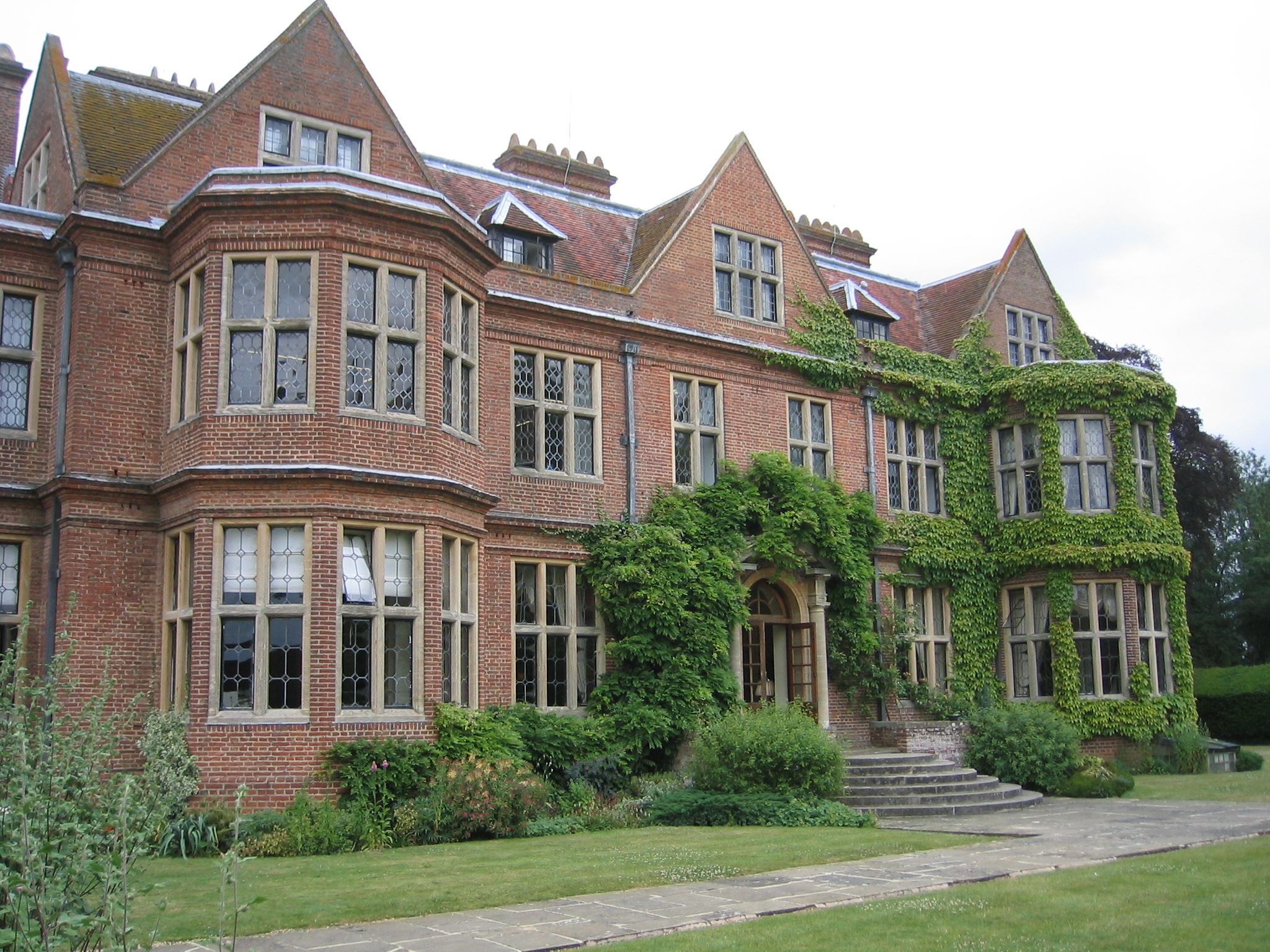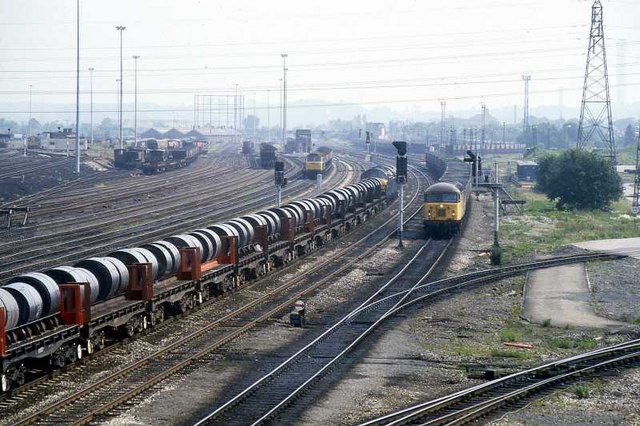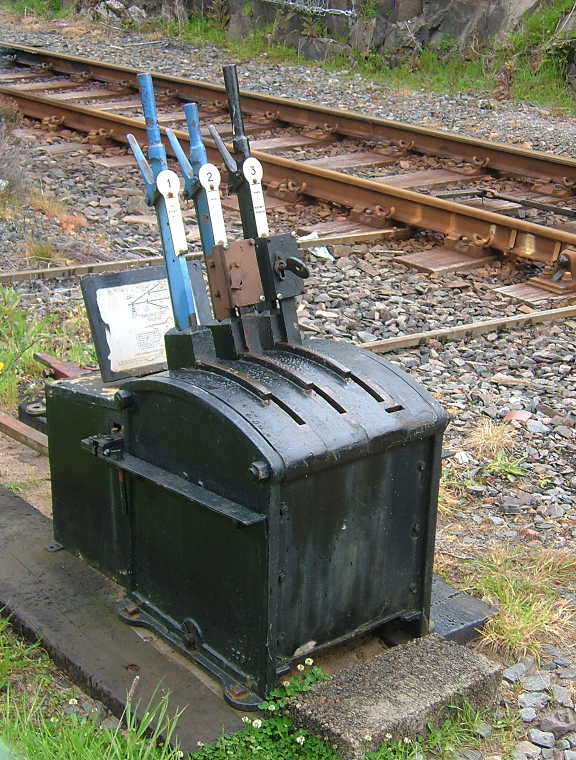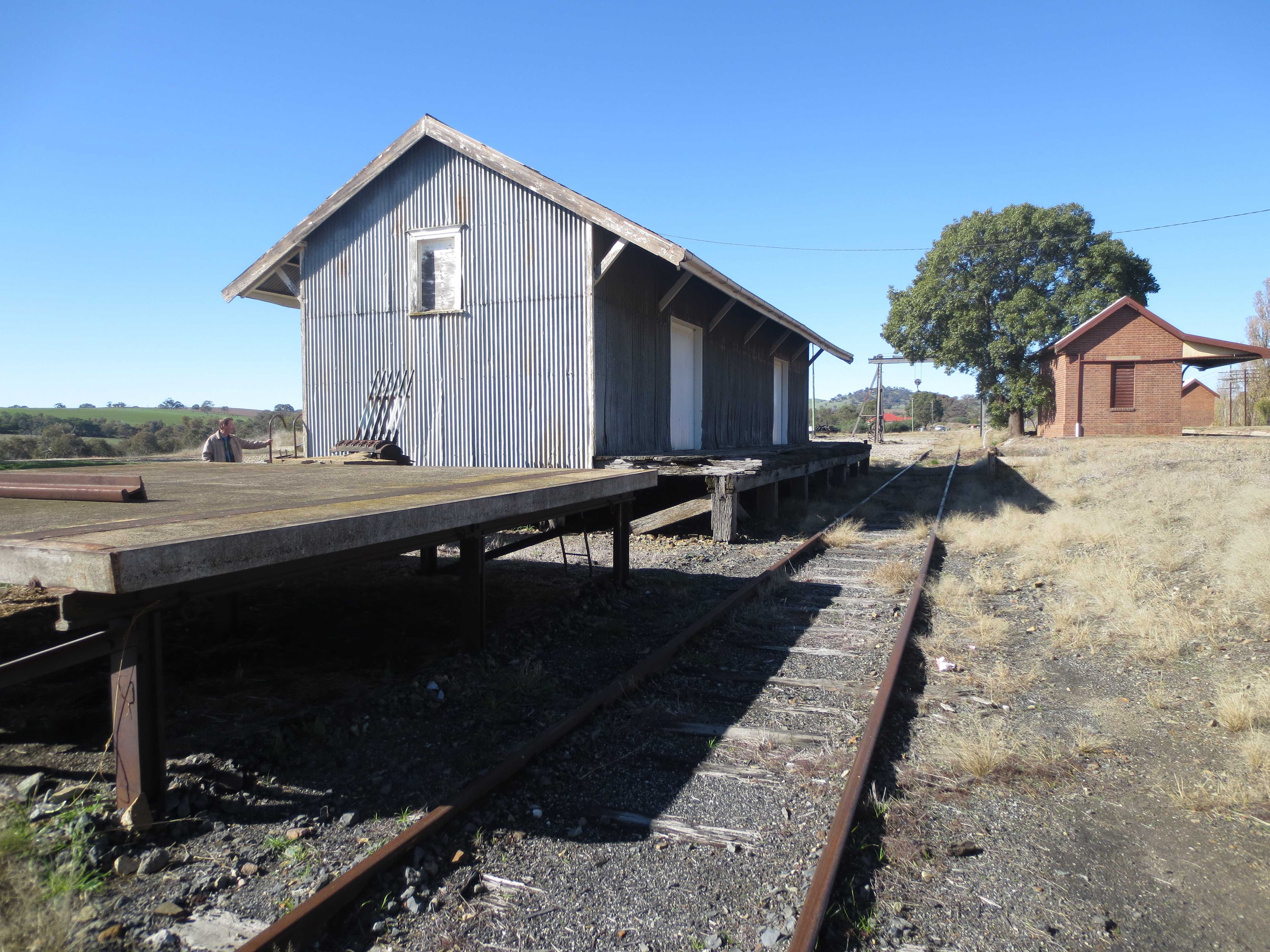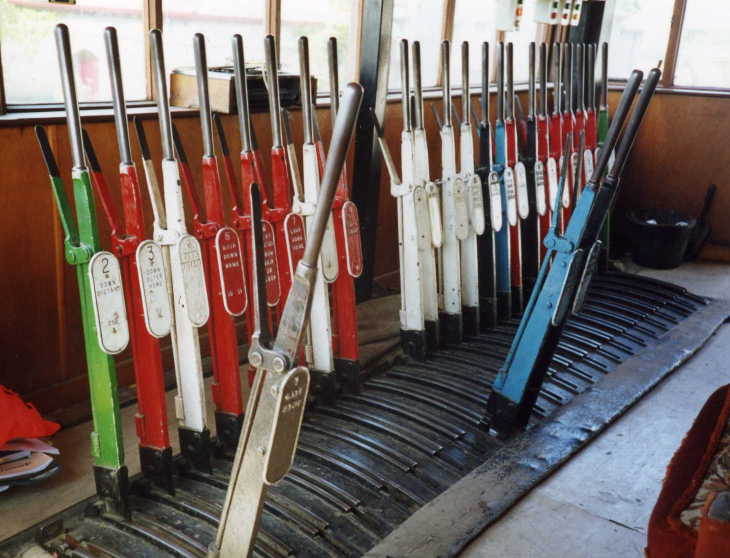|
Swanbourne Sidings
Swanbourne was a railway station that served the villages of Swanbourne, Little Horwood and Mursley in north Buckinghamshire, England. It was on the mothballed Bicester to Bletchley line, roughly at the centre of a triangle drawn between the three villages. In summer 2020, the station was demolished to clear the route for East West Rail. History Swanbourne was opened by the Buckinghamshire Railway most likely not when the company's line from Banbury to opened on 1 May 1850, but rather a short time afterwards. It did not appear in '' Bradshaw's Guide'' until October 1851. The line was worked from the outset by the London and North Western Railway which absorbed the Buckinghamshire Railway in 1879. It was subsequently extended westwards to , to a temporary station at Banbury Road and then to Oxford, opening throughout on 20 May 1851. As it passed through the parish of Little Horwood, the proposed line had been opposed by the Dauncy family, the occupants of Horwood Ho ... [...More Info...] [...Related Items...] OR: [Wikipedia] [Google] [Baidu] |
Swanbourne
Swanbourne is a village and civil parish in the unitary authority area of Buckinghamshire, England. It lies about two miles (3.2 km) east of Winslow and three miles (4.8 km) west of Stewkley, on the secondary road B4032. History The village name is Anglo Saxon in origin and may mean "swan stream". It was recorded as ''Suanaburna'' in the ''Anglo-Saxon Chronicle'' in 792. A grant of land was made to Woburn Abbey in 1201."Parishes : Swanbourne" , A History of the County of Buckingham: Volume 3 (1927), pp. 427–432. The first vicar of the parish arrived in 1218 and the parish church was dedica ... [...More Info...] [...Related Items...] OR: [Wikipedia] [Google] [Baidu] |
Horwood House
Horwood House lies south east of the village of Little Horwood in Buckinghamshire. This Grade II listed building mansion is a comparatively modern house, built in 1911, the date being embossed into the gutter hopper-heads. Today it is a hotel and conference venue, owned and operated by ZIZ Properties Ltd. History It was built for Frederick Arthur Denny (who had made his fortune in pork and bacon) and designed in a refined Jacobean style by the architects Blow and Billerey. It is built on the site of the former Old Horwood, a 300-year-old farmhouse previously known as Rectory House. Old Horwood was a building of late sixteenth-century construction, consisting of two storeys and an attic, with walls of timber and brick, which a Colonel Daucy occupied for a period and local folklore suggests that his ghost haunts the present house. It was extended in the later seventeenth century, and enlarged in the nineteenth century. When the estate was purchased by Denny it consisted of , two ... [...More Info...] [...Related Items...] OR: [Wikipedia] [Google] [Baidu] |
Toton TMD
Toton Traction Maintenance Depot or Toton Sidings is a large traction maintenance depot located in Toton, Nottinghamshire. The TOPS depot code for the depot is TO. Before TOPS, the shed code was 16A (18A prior to 1963). Prior to the 2021 Integrated Rail Plan for the North and Midlands, the site was the proposed location of the East Midlands Hub railway station on the Leeds Branch of HS2. History The history of the development of Toton is highly associated with the history, development and decline of the coal industry in England. The Midland Railway had developed the Midland Main Line from the 1860s, and had a developing revenue from coal traffic from both the Yorkshire and Nottinghamshire coalfields to the power stations of the industrialised West Midlands. This traffic was added to by the fact that most towns also had their own gasworks, with coal delivered by rail to their own private sidings, and the rapidly developing domestic use of coal for heating and cooking. With nee ... [...More Info...] [...Related Items...] OR: [Wikipedia] [Google] [Baidu] |
Milepost
A milestone is a numbered marker placed on a route such as a road, railway line, canal or boundary. They can indicate the distance to towns, cities, and other places or landmarks; or they can give their position on the route relative to some datum location. On roads they are typically located at the side or in a median or central reservation. They are alternatively known as mile markers, mileposts or mile posts (sometimes abbreviated MPs). A "kilometric point" is a term used in metricated areas, where distances are commonly measured in kilometres instead of miles. "Distance marker" is a generic unit-agnostic term. Milestones are installed to provide linear referencing points along the road. This can be used to reassure travellers that the proper path is being followed, and to indicate either distance travelled or the remaining distance to a destination. Such references are also used by maintenance engineers and emergency services to direct them to specific points where th ... [...More Info...] [...Related Items...] OR: [Wikipedia] [Google] [Baidu] |
Beeching Cuts
The Beeching cuts (also Beeching Axe) was a plan to increase the efficiency of the nationalised British Rail, railway system in Great Britain. The plan was outlined in two reports: ''The Reshaping of British Railways'' (1963) and ''The Development of the Major Railway Trunk Routes'' (1965), written by Richard Beeching and published by the British Railways Board. The first report identified 2,363 stations and of railway line for closure, amounting to 55% of stations, 30% of route miles, and 67,700 British Rail positions, with an objective of stemming the large losses being incurred during a period of increasing competition from road transport and reducing the rail subsidies necessary to keep the network running. The second report identified a small number of major routes for significant investment. The 1963 report also recommended some less well-publicised changes, including a switch to the now-standard practice of containerisation for rail freight, and the replacement of some ... [...More Info...] [...Related Items...] OR: [Wikipedia] [Google] [Baidu] |
Marshalling Yard
A classification yard (American and Canadian English (Canadian National Railway use)), marshalling yard (British, Hong Kong, Indian, Australian, and Canadian English (Canadian Pacific Railway use)) or shunting yard (Central Europe) is a railway yard found at some freight train stations, used to separate railway cars onto one of several tracks. First the cars are taken to a track, sometimes called a ''lead'' or a ''drill''. From there the cars are sent through a series of switches called a ''ladder'' onto the classification tracks. Larger yards tend to put the lead on an artificially built hill called a ''hump'' to use the force of gravity to propel the cars through the ladder. Freight trains that consist of isolated cars must be made into trains and divided according to their destinations. Thus the cars must be shunted several times along their route in contrast to a unit train, which carries, for example, cars from the plant to a port, or coal from a mine to the power plant. ... [...More Info...] [...Related Items...] OR: [Wikipedia] [Google] [Baidu] |
Annett's Key
In British, Australian, French, and Swiss railway signalling, an Annett's key is a form of trapped-key interlocking that locks levers or other items of signalling apparatus, thereby serving as a portable form of interlocking. The purpose is to prevent access from sidings to the running line without authority. When not in use, the key is normally held in an Annett's lock that is fixed to the lever or concerned apparatus. History The Annett's key takes its name from its inventor, J. E. Annett of the London, Brighton and South Coast Railway. Annett patented his design in 1875; in 1881 that patent was bought out by Saxby and Farmer. Operation In British usage, the key may be held in a locked container in the signal box that can only be opened when the corresponding signal lever is turned to ''danger'' for traffic on the running line; the lever is locked in position until the key is returned. Alternatively, the key may be attached to the train staff for the section of running li ... [...More Info...] [...Related Items...] OR: [Wikipedia] [Google] [Baidu] |
Goods Yard
A goods station (also known as a goods yard or goods depot) or freight station is, in the widest sense, a railway station where, either exclusively or predominantly, goods (or freight), such as merchandise, parcels, and manufactured items, are loaded onto or unloaded off of ships or road vehicles and/or where goods wagons are transferred to local sidings. A station where goods are not specifically received or dispatched, but simply transferred on their way to their destination between the railway and another means of transport, such as ships or lorries, may be referred to as a transshipment station. This often takes the form of a container terminal and may also be known as a container station. Goods stations were more widespread in the days when the railways were common carriers and were often converted from former passenger stations whose traffic had moved elsewhere. First goods station The world's first dedicated goods terminal was the 1830 Park Lane Goods Station at the ... [...More Info...] [...Related Items...] OR: [Wikipedia] [Google] [Baidu] |
Ground Frame
Mechanical railway signalling installations rely on lever frames for their operation to interlock the signals, track locks and points to allow the safe operation of trains in the area the signals control. Usually located in the signal box, the levers are operated either by the signalman or the pointsman. The world's largest lever frame is believed to have been in the Spencer Street No.1 signal box in Melbourne, Australia, which had 191 levers, but was decommissioned in 2008. The largest, currently operational, lever frame is located at Severn Bridge Junction in Shrewsbury, England, and has 180 levers; although most of them have now been taken out of use. Overview The lever frame is located in the signal box, which can be a building at ground level or a tower, separated from or connected to an existing station building. Early lever frames were also built as ''ground frames'' next to the track, without any form of shelter and were usually operated by traincrew and not per ... [...More Info...] [...Related Items...] OR: [Wikipedia] [Google] [Baidu] |
Second World War
World War II or the Second World War, often abbreviated as WWII or WW2, was a world war that lasted from 1939 to 1945. It involved the vast majority of the world's countries—including all of the great powers—forming two opposing military alliances: the Allies and the Axis powers. World War II was a total war that directly involved more than 100 million personnel from more than 30 countries. The major participants in the war threw their entire economic, industrial, and scientific capabilities behind the war effort, blurring the distinction between civilian and military resources. Aircraft played a major role in the conflict, enabling the strategic bombing of population centres and deploying the only two nuclear weapons ever used in war. World War II was by far the deadliest conflict in human history; it resulted in 70 to 85 million fatalities, mostly among civilians. Tens of millions died due to genocides (including the Holocaust), starvation, ma ... [...More Info...] [...Related Items...] OR: [Wikipedia] [Google] [Baidu] |
Whaddon Chase
Whaddon is a village and also a civil parish within the unitary authority area of Buckinghamshire, England. It is situated just outside of Bletchley, a constituent town of Milton Keynes. The village name is Anglo Saxon in origin, and means 'hill where wheat is grown'. The village is referred to several times in the ''Anglo-Saxon Chronicle'' generally in the form of ''Hwætædun''. The village is at the centre of the ancient Whaddon Chase, the site for many centuries of royal hunting lands. Whaddon Chase is designated an area of 'Special Landscape Interest'. Whaddon Church of England School is a mixed Church of England primary school. It is a voluntary controlled school, which takes children from the age of four through to the age of eight. The school has approximately 50 pupils. Richard Cox (ca.1500 – 1581), an English clergyman, who was Dean of Westminster and Bishop of Ely, was born at Whaddon. Whaddon Hall, the village manor, was once home to the Selby family (also kno ... [...More Info...] [...Related Items...] OR: [Wikipedia] [Google] [Baidu] |
Rothschild Banking Family Of England
The Rothschild banking family of England was founded in (1798) by Nathan Mayer von Rothschild (1777–1836) who first settled in Manchester but then moved to London (at the time in the Kingdom of Great Britain). Nathan was sent there from his home in Frankfurt by his father, Mayer Amschel Rothschild (1744–1812). Wanting his sons to succeed on their own and to expand the family business across Europe, Mayer Amschel Rothschild had his eldest son remain in Frankfurt, while his four other sons were sent to different European cities to establish a financial institution to invest in business and provide banking services. Nathan Mayer von Rothschild, the third son, first established a textile jobbing business in Manchester and from there went on to establish N M Rothschild & Sons bank in London. From the home base in Frankfurt, Rothschild sons not only established themselves in the UK but also in Paris, Vienna and Naples in the Two Sicilies. Through their collaborative efforts, the ... [...More Info...] [...Related Items...] OR: [Wikipedia] [Google] [Baidu] |
